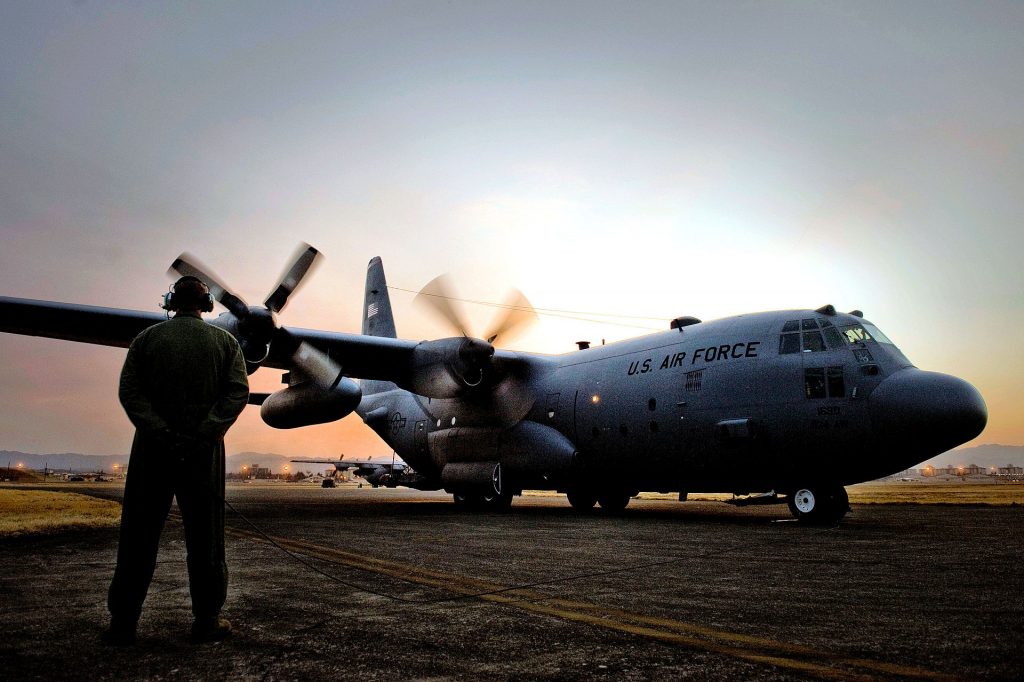I worked on Operation Desert Storm from 7,000 miles away. My family and I arrived in Korea in June 1990, two months before Saddam Hussein attacked Kuwait on Aug. 2. I was assigned to Headquarters 7th Air Force at Osan Air Base. The headquarters buildings were on a hill overlooking the base and the flightline. My job was to support transportation units at all Air Force installations in the Republic of Korea. With a staff of 10, we provided traffic management policy for truck, rail, aerial port and water port operations. This included vehicles, equipment, mail, freight, personal property and passengers. We managed 5,000 vehicles assigned to Osan and Kunsan air bases plus “collocated operating bases” at Taegu, Suwon, Kwangju, Kimhae and Cheongju with the Korean Air Force.
From October to December in 1990, U.S. Air Force personnel on the Korean peninsula shipped 13 million pounds of military material that was urgently needed to build up for Operation Desert Storm. We all worked seven days a week. At headquarters, staff generally worked 5 1/2 days a week so this was a big change. Our Korean shipments included 114 vehicles, 5,000 pieces of munitions, and 2,500 pieces of critical cargo like tons of concertina wire and thousands of tent stakes and cots. All of this war readiness material had been prepositioned in warehouses throughout Korea to support reinforcement troops, should North Korea misbehave. It would then be expended in the Middle East. Fortunately, we had plenty of stuff that had been built up since the 1950s.
The most memorable cargo we handled was hundreds of Mark 82 500-pound bombs. Temporary duty teams inspected and crated bombs for shipment then loaded them on trains to the port at Chinhae. We arranged with the Korean National Railway for priority express trains to depart our warehouses twice a day nonstop. Each train carried two Air Force Security Policemen equipped with M16 rifles and satellite communications equipment. Our concern was that something would happen while transiting a populated area. Fortunately, nothing bad happened. Military and contracted Korean stevedores filled three cargo ships full of 500-pound bombs.
We had to support Operation Desert Storm without reducing deterrence to North Korea. Kim Il-Sung, who had ruled since 1948, was frail. He started turning power over to his son Kim Jong-Il in 1991. It was believed that North Korea was planning an invasion of South Korea while the U.S. military was tied up in Iraq. Due to our vigilance, this did not happen.
The U.S. launched air attacks at Baghdad on Jan. 17, 1991. Several weeks before that, I had been detailed to staff the J-4 Logistics desk for 12 hours a day in our nuclear, biological and chemical attack hardened headquarters command post. I read over a hundred classified reports and messages daily. Ironically, the best intel that we received was from CNN. Everyone in the command post watched in amazement as journalists broadcast images and descriptions of the attack live from their room on the ninth floor of the Al Rasheed Hotel in downtown Baghdad. We learned later that Saddam Hussein was watching the same program.
During 42 consecutive days and nights of “shock and awe” the coalition flew over 100,000 sorties, dropping 88,500 tons of bombs. I believe that much of that ordinance was our many shipments of materials from the Korean Peninsula.
